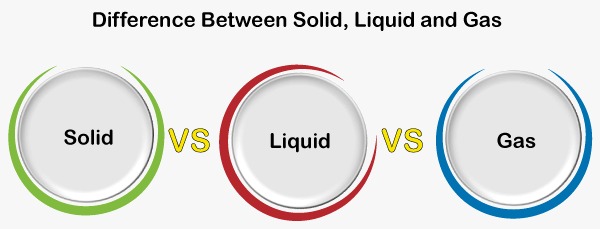Difference between Solid, Liquid and Gas
There are numerous topics in chemistry that we find interesting. Out of these, solid, liquid, and gas is one of the significant topics. We know what does solid, liquid, and gas means in layman’s term. But it is necessary to know the meaning of these terms. As we know, that solid, liquid, and gas are the foundational and basic states of matter. These states of matter are essential in knowing the nature of existence. So, let us begin by knowing the basic meaning of these terms.
Solid
Solid is defined as the state of matter where the atoms and molecules are compressed in a tight manner. The molecules have very less kinetic energy because they are tightly packed. There are two major categories of solid, namely amorphous and crystalline. Crystalline solids are defined as the solids in which the atoms and molecules are in order. On the other hand, an amorphous solid is defined as a solid in which the atoms and molecules are not in order. Some of the examples of solids include wood, gold, steel, brass, copper, etc.

Liquid
A liquid is defined as the state of matter which takes any shape, it is poured in. The liquid is a fluid that cannot be compressed, i.e., it has limited compressibility. The volume of liquid is fixed, unlike its shape. Liquid can acquire any shape in which it is poured. Examples of liquid include water, juices, soft drinks, etc.
Gas
Gas is defined as the state of matter that does not have a fixed shape or volume. The molecules and atoms in a gaseous state can be compressed. Gases can either be made of one kind of atom or a variety of atoms (compound molecules). Examples of gases include helium, argon, nitrogen, oxygen, chlorine, etc. Now, there are certain differences between these three terms. So, let us discuss them briefly.
| S.NO. | SOLID | LIQUID | GAS |
|---|
